METHYL N-PROPYL ETHER
Synonym(s):Methyl propyl ether
- CAS NO.:557-17-5
- Empirical Formula: C4H10O
- Molecular Weight: 74.12
- MDL number: MFCD00059399
- EINECS: 209-158-7
- SAFETY DATA SHEET (SDS)
- Update Date: 2024-12-18 14:08:57

What is METHYL N-PROPYL ETHER?
Description
Methyl propyl ether is a clear, highly flammable, peroxidizable liquid. Molecular weight = 74.14;Boiling point = 39℃; Flash point #220℃. HazardIdentification (based on NFPA-704 M Rating System):Health 0, Flammability 3, Reactivity 0.
The Uses of METHYL N-PROPYL ETHER
1-Methoxypropane is used in method for producing crystal aluminum trihydride by wet compound synthesis.
General Description
A colorless volatile liquid with an ether-like odor. Less dense than water and insoluble in water. Flash point below 0°F. Vapors heavier than air. May be narcotic by inhalation in high concentrations. Used as a solvent and to make other chemicals.
Air & Water Reactions
Highly flammable. Oxidizes readily in air to form unstable peroxides that may explode spontaneously [Bretherick 1979. p.151-154, 164]. A mixture of liquid air and diethyl ether exploded spontaneously [MCA Case History 616. 1960]. Insoluble in water.
Reactivity Profile
Ethers, such as METHYL N-PROPYL ETHER, can act as bases. They form salts with strong acids and addition complexes with Lewis acids. The complex between diethyl ether and boron trifluoride is an example. Ethers may react violently with strong oxidizing agents. In other reactions, which typically involve the breaking of the carbon-oxygen bond, ethers are relatively inert.
Health Hazard
Inhalation or contact with material may irritate or burn skin and eyes. Fire may produce irritating, corrosive and/or toxic gases. Vapors may cause dizziness or suffocation. Runoff from fire control may cause pollution.
Fire Hazard
HIGHLY FLAMMABLE: Will be easily ignited by heat, sparks or flames. Vapors may form explosive mixtures with air. Vapors may travel to source of ignition and flash back. Most vapors are heavier than air. They will spread along ground and collect in low or confined areas (sewers, basements, tanks). Vapor explosion hazard indoors, outdoors or in sewers. Runoff to sewer may create fire or explosion hazard. Containers may explode when heated. Many liquids are lighter than water.
Safety Profile
A poison by inhalation. A flammable liquid. When heated to decomposition it emits acrid smoke and irritating vapors.
Potential Exposure
Used to make other chemicals
First aid
If this chemical gets into the eyes, remove anycontact lenses at once and irrigate immediately for at least15 min, occasionally lifting upper and lower lids. Seek medical attention immediately. If this chemical contacts theskin, remove contaminated clothing and wash immediatelywith soap and water. Seek medical attention immediately. Ifthis chemical has been inhaled, remove from exposure,begin rescue breathing (using universal precautions, including resuscitation mask) if breathing has stopped and CPR ifheart action has stopped. Transfer promptly to a medicalfacility. When this chemical has been swallowed, get medical attention. Give large quantities of water and inducevomiting. Do not make an unconscious person vomit.
storage
Color Code—Red: Flammability Hazard: Store ina flammable liquid storage area or approved cabinet awayfrom ignition sources and corrosive and reactive materials.Prior to working with methyl propyl ether you should betrained on its proper handling and storage. Store in tightlyclosed containers in a cool, well-ventilated area away fromoxidizers, heat, flames. Where possible, automaticallypump liquid from drums or other storage containers to process containers. Drums must be equipped with self-closingvalves, pressure vacuum bungs, and flame arresters. Useonly nonsparking tools and equipment, especially whenopening and closing containers of this chemical. Whereverthis chemical is used, handled, manufactured, or stored, useexplosion-proof electrical equipment and fittings.
Shipping
Methyl propyl ether requires a shipping label of“FLAMMABLE LIQUID.” It falls in Hazard Class 3 andPacking Group II.
Purification Methods
Dry it with CaSO4, then pass the ether through a column of alumina (to remove peroxides) and fractionally distil it. [Beilstein 1 H 354, 1 I 178, 1 II 367, 1 III 1413, 1 IV 1421.]
Incompatibilities
Forms explosive mixture with air. Maybe able to form unstable and explosive peroxides. Violentreaction with strong oxidizers. Incompatible with strongacids.
Properties of METHYL N-PROPYL ETHER
| Melting point: | -139.18°C |
| Boiling point: | 39°C |
| Density | 0,73 g/cm3 |
| refractive index | n20/D1.357 |
| Water Solubility | 29.6g/L(25 ºC) |
| Merck | 14,6113 |
| CAS DataBase Reference | 557-17-5(CAS DataBase Reference) |
| EPA Substance Registry System | Propane, 1-methoxy- (557-17-5) |
Safety information for METHYL N-PROPYL ETHER
| Signal word | Danger |
| Pictogram(s) |
 Flame Flammables GHS02 |
| GHS Hazard Statements |
H224:Flammable liquids |
| Precautionary Statement Codes |
P210:Keep away from heat/sparks/open flames/hot surfaces. — No smoking. P233:Keep container tightly closed. P240:Ground/bond container and receiving equipment. P241:Use explosion-proof electrical/ventilating/lighting/…/equipment. P242:Use only non-sparking tools. P403+P233:Store in a well-ventilated place. Keep container tightly closed. |
Computed Descriptors for METHYL N-PROPYL ETHER
New Products
4-Fluorophenylacetic acid 4-Methylphenylacetic acid N-Boc-D-alaninol N-BOC-D/L-ALANINOL Tert-butyl bis(2-chloroethyl)carbamate 3-Morpholino-1-(4-nitrophenyl)-5,6-dihydropyridin- 2(1H)-one Furan-2,5-Dicarboxylic Acid Tropic acid S-2-CHLORO PROPIONIC ACID ETHYL ISOCYANOACETATE 2-Bromo-1,3-Bis(Dimethylamino)Trimethinium Hexafluorophosphate (6-METHYL-[1,3]DITHIOLO[4,5-b]QUINOXALIN-2-ONE INDAZOLE-3-CARBOXYLIC ACID 4-IODO BENZOIC ACID (2-Hydroxyphenyl)acetonitrile 4-Bromopyrazole 5,6-Dimethoxyindanone 2-(Cyanocyclohexyl)acetic acid 4-methoxy-3,5-dinitropyridine 2-aminopropyl benzoate hydrochloride 1-(4-(aminomethyl)benzyl)urea hydrochloride diethyl 2-(2-((tertbutoxycarbonyl)amino) ethyl)malonate tert-butyl 4- (ureidomethyl)benzylcarbamate Ethyl-2-chloro((4-methoxyphenyl)hydrazono)acetateRelated products of tetrahydrofuran
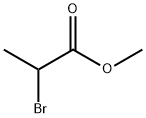
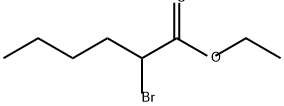

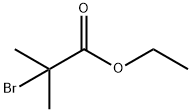

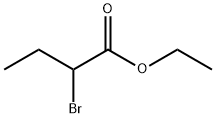
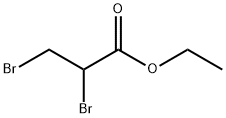

You may like
-
 Methyl Propyl Ether CAS 557-17-5View Details
Methyl Propyl Ether CAS 557-17-5View Details
557-17-5 -
 1-Methoxypropane CAS 557-17-5View Details
1-Methoxypropane CAS 557-17-5View Details
557-17-5 -
 1975-50-4 98%View Details
1975-50-4 98%View Details
1975-50-4 -
 2-HYDROXY BENZYL ALCOHOL 98%View Details
2-HYDROXY BENZYL ALCOHOL 98%View Details
90-01-7 -
 2-Chloro-1,3-Bis(Dimethylamino)Trimethinium Hexafluorophosphate 221615-75-4 98%View Details
2-Chloro-1,3-Bis(Dimethylamino)Trimethinium Hexafluorophosphate 221615-75-4 98%View Details
221615-75-4 -
 61397-56-6 CIS BROMO BENZOATE 98%View Details
61397-56-6 CIS BROMO BENZOATE 98%View Details
61397-56-6 -
 14714-50-2 (2-Hydroxyphenyl)acetonitrile 98+View Details
14714-50-2 (2-Hydroxyphenyl)acetonitrile 98+View Details
14714-50-2 -
 118753-70-1 98+View Details
118753-70-1 98+View Details
118753-70-1